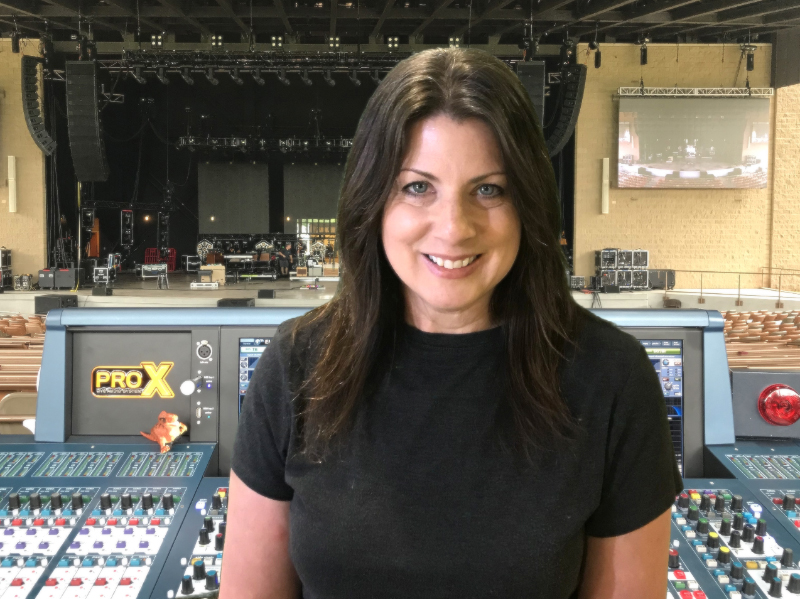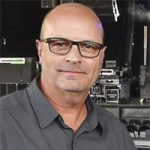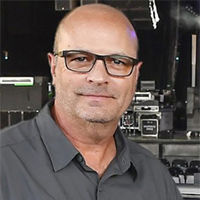Michelle Sabolchick Pettinato is an extremely successful live audio engineer with nearly 30 years of experience mixing front of house for some very talented artists and bands. I first met her in person in Tokyo at the Summer Sonic Festival in 2007 after hearing her name lifted up for many years with high regard from many fellow mix engineer colleagues.
She was mixing for Gwen Stefani then, and I was with Avril Lavigne. We didn’t get to chat much that day because we had a lot to get done in a short amount of time, but we recently re-connected when she reached out with some kind words about an article I had written focusing on simple approaches and straightforward processes in building a mix. I was glad to hear she was also a proponent of the “less is more” mix philosophy.
We also spoke for a while about our passion for live audio education and how tough it was to find back in the 1980s and 90s when we first started out, striving daily to become better engineers. We’ve stayed in touch, and it seems every conversation ultimately circles back to education and the gift of passing on what we’ve learned to future generations. It’s a thrill for me to get this chance to ask Michelle some questions about her illustrious career and her thoughts on some important topics that truly matter in our awesome industry.
Jim Yakabuski: Welcome Michelle! It’s great to have this opportunity to speak with you about your amazing career. I love to learn how engineers get started in the live sound industry, so I’ll start with this question: When did you first start working in audio and do you have any vivid memories of your first “real” gig mixing a live show?
Michelle Sabolchick Pettinato: I started in live sound in 1989 as an unpaid intern at a small local sound company where I worked in the shop during the week, building cases, cleaning, and prepping gear, and then doing shows on the weekend. From there I moved to Florida and started working at a nightclub doing sound and lights, also serving as a stagehand for another small sound company and in the A/V department at a big entertainment complex. I basically took any and every job in audio that I could get. Somewhere among all that I also did some assisting at a couple small studios and mixed sound for local bands.
My first vivid memories about mixing a “real” gig are from when I was hired to mix FOH for the Spin Doctors in 1992. It was my first tour – I did one club show with the band and the next day we were on the H.O.R.D.E. tour (with Blues Traveler, Widespread Panic, Bela Fleck and others). It was playing large amphitheaters all over the country. At that point I’d only mixed small shows and here I was mixing this national act with a record flying up the charts, in front of thousands of people. It was quite a thrill!
We were something like the third band on the main stage, no sound check and only 20 minutes to get our gear on stage, miked and wired. I did a quick line check over the headphones at FOH and off we went. This was long before digital consoles, and I think it was a Soundcraft 8000 at FOH, so I was dialing it in from scratch every day. I had to learn how to pull a mix together really fast because our set time was only about 20 or 30 minutes – luckily the band had only around 20 inputs or so. It was a bit of a trial by fire!
But the experience really helped prepare me for what was to come, as two years later we were supporting the Rolling Stones on their Voodoo Lounge tour in the U.S. and South America, playing some of the biggest stadiums in the world.
JY: That’s definitely an example of a “steep learning curve!” I have to say I had a lot more time to ease into it when I first started mixing. Hats off to you for diving in there and rising to the challenges. Live audio is not for the faint of heart, that’s for sure. On that note, have you ever worked in – or considered working in – another field of audio? Perhaps in the studio or in broadcast, or was live audio always your first choice?

MSP: Originally, I wanted to be a recording engineer and make records, but once I realized that you could actually make a living doing live sound on tour, I immediately switched gears. It was like wait, I can mix music while traveling the world and getting paid for it? I’m in!
Music was a huge passion of mine and so was travel. Coming from the small town I did, I desperately wanted to see the world so it was as though everything converged at one moment and I knew live sound and touring was the path for me. From that moment my mission became to get on tour.
JY: Let’s talk about audio education. You have a passion for passing on the knowledge you’ve acquired over the years. Here’s a pop quiz: What would you say is “the one” thing you tell young audio engineers they must do to make it in this very competitive field, and the one thing they should try very hard to never do?















